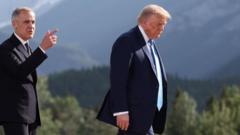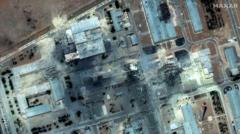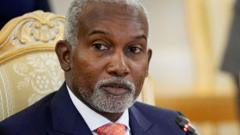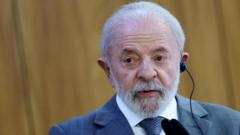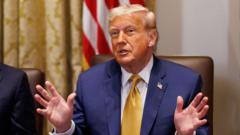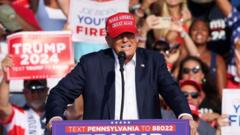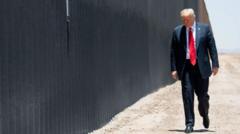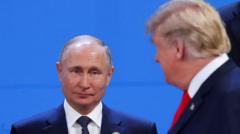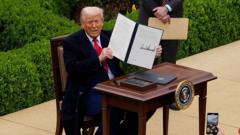As President Donald Trump unveiled plans for the Golden Dome, a next-generation missile defense system inspired by Israel's Iron Dome, experts expressed skepticism about its feasibility, financial implications, and the potential for escalating an arms race.
Trump's Ambitious Golden Dome Defense System Faces Challenges
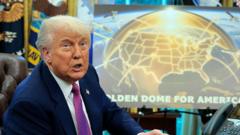
Trump's Ambitious Golden Dome Defense System Faces Challenges
The proposed Golden Dome missile defense initiative reveals both potential and formidable hurdles as experts weigh its costs and technological complexities.
With the rise of advanced threats such as hypersonic weapons and orbital bombardment systems looming over the United States, President Donald Trump has set a bold vision to develop a missile defense initiative known as the Golden Dome. He envisions completing this ambitious project by the end of his term, highlighting the pressing need to modernize the nation’s defenses against sophisticated aerial attacks.
Experts warn that antiquated defense systems could result in catastrophic consequences if faced with overwhelming strikes—from electromagnetic pulses that incapacitate electronics to high-altitude nuclear detonations. Author and military researcher William Fortschen ominously noted that a significant EMP attack could reverse societal progress to the extent of sending the U.S. back "1,000 years," creating chaos from falling aircraft to paralyzed infrastructures.
The White House's proposal, initially referred to as the "Iron Dome for America," recognizes a shifting landscape of threats. Patrycja Bazylczyk, a missile defense analyst, points out current defense capabilities focus mainly on intercontinental ballistic missiles, primarily those from North Korea, while adversaries like Russia and China are investing in more advanced strike technologies.
The conceptual Golden Dome aims to provide a robust, multi-tiered defense encompassing land, sea, and space, according to Defense Secretary Pete Hegseth. However, details about its mechanics remain scarce. The system is expected to build upon current capabilities but will require advanced features to intercept various threats at multiple stages, including cruise missiles and potential attacks from space.
Current U.S. missile defense systems, primarily reliant on 44 interceptors based in Alaska and California, are regarded as insufficient for countering a full-scale attack from nations like Russia and China, which possess extensive arsenals. Military experts estimate that achieving even a minimal defense will necessitate "hundreds or thousands" of space-based systems, compounding the projected financial burden significantly.
Trump’s inspiration stems from Israel's Iron Dome, which successfully intercepts shorter-range threats. However, the Golden Dome would need to tackle a broader spectrum of attacks, potentially ranging from low-tier rockets to high-altitude missiles. To realize this vision, Bazylczyk emphasized the need for an integrated command and control system that currently does not exist.
Achieving such a sophisticated defense is fraught with complications and massive financial implications. Trump has suggested a budget of $175 billion, with an immediate investment of $25 billion, juxtaposed against the Congressional Budget Office's estimate of $542 billion just for space components over the next two decades. Defense experts express doubts about the timeliness and feasibility of Trump's plans, warning of potential risks and failures in a fast-tracked development approach.
Additionally, the initiative raises concerns about triggering a renewed arms race, with adversaries ramping up efforts to counter U.S. capabilities. China's foreign ministry criticized the plans, warning of an escalating risk of space warfare. Still, proponents argue that a functional Golden Dome could act as a deterrent against attacks, fundamentally altering adversaries' military calculations.
William Fortschen believes that even a partially operational Golden Dome would mark a significant advancement in national security, asserting it could prevent catastrophic attack scenarios. He and other experts underscore the necessity of an effective system to safeguard the U.S. from evolving and escalating aerial threats, underlining their broad concerns despite the complexities involved in making the Golden Dome a reality.

